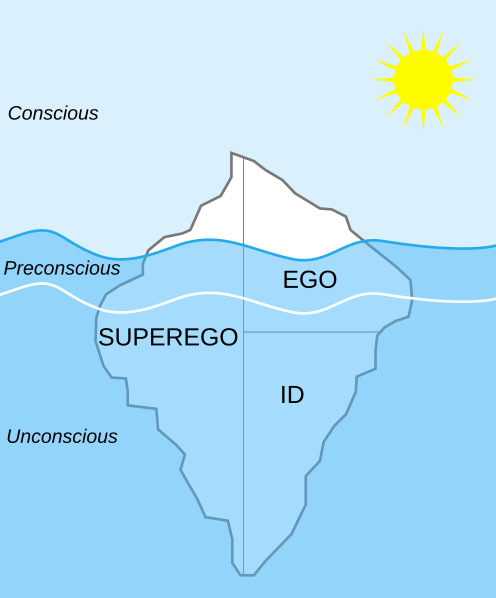In discussion of the very core of our narrative, we found that it captures the essence of the conscience seeking to direct our lives and goals, not dissimilar to Sigmund Freud’s psychoanalysis of the id, ego and super-ego. While not straying too far from the point, we briefly drew parallels from Freud’s theories to elements of our narrative.
Id
The evil wolf comes to represent the dark, inaccessible part of the Id, where primal instincts drive the subject to satisfy pleasures and desires in complete disregard to all else. The evil wolf brings chaos and destruction to the environment with its relentless pursuit of its goal.
Ego
Conversely, the good wolf can come to reflect the Ego, as it seeks to control the Id’s primal instincts. It too desires to control the human psyche, but to suit long term benefits as reflected in its restoration of life to the surrounding environments.
Super-ego
Lastly, the super-ego is found in the culmination of the human soul and psyche of the Native American doll. Being influenced by both id and ego (the two wolves in this case), it strives to maintain a balance to suppress the unacceptable urges of the id and make the ego act upon idealistic standards rather than on simple realistic principles. It is present in the conscious, preconscious and unconscious.
This helps to discern the essence of what each element in our narrative may come to represent.


Thanks a lot LEo, this one really clears things up :]
ReplyDeleteno really, this theory merges with our concept just too beautifully (:D Awesome!
ReplyDeleteego (after Freud)
ReplyDeletehttp://www.youtube.com/watch?v=Y2rcO23QFEg